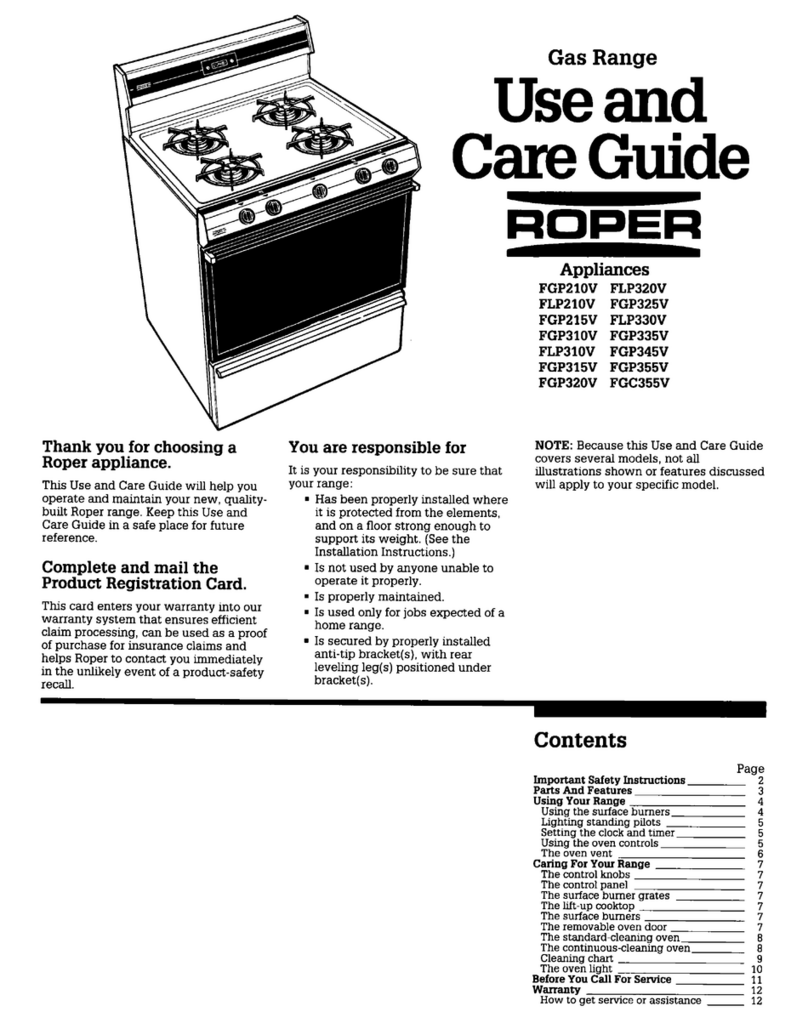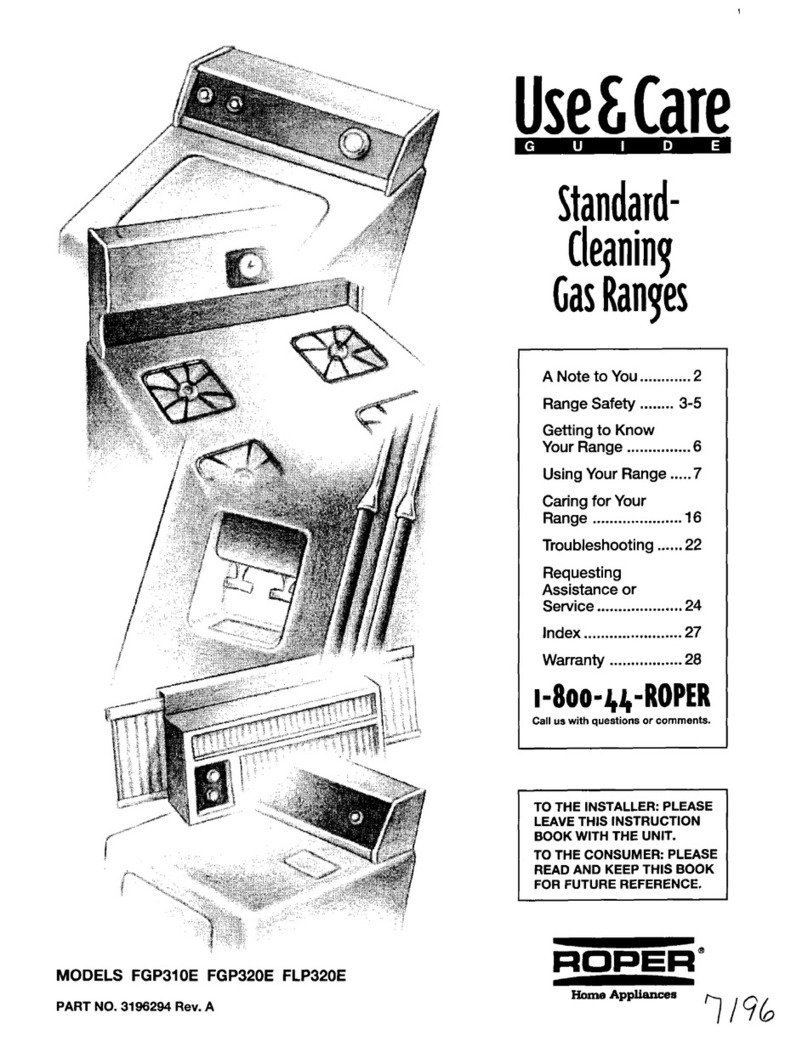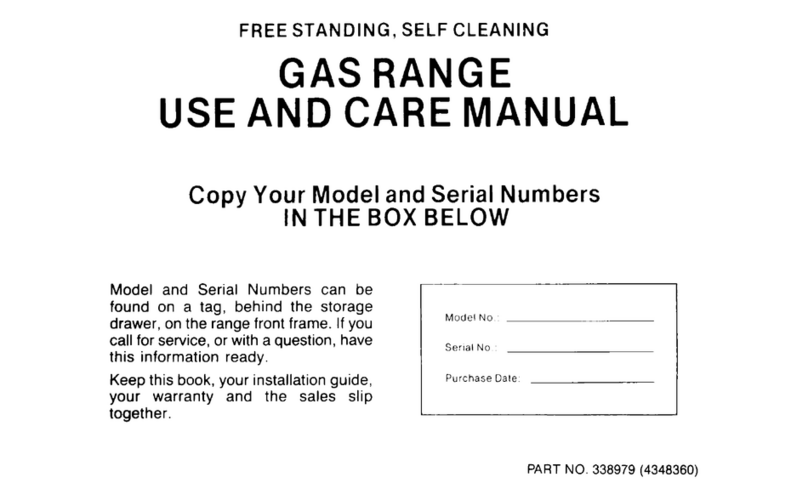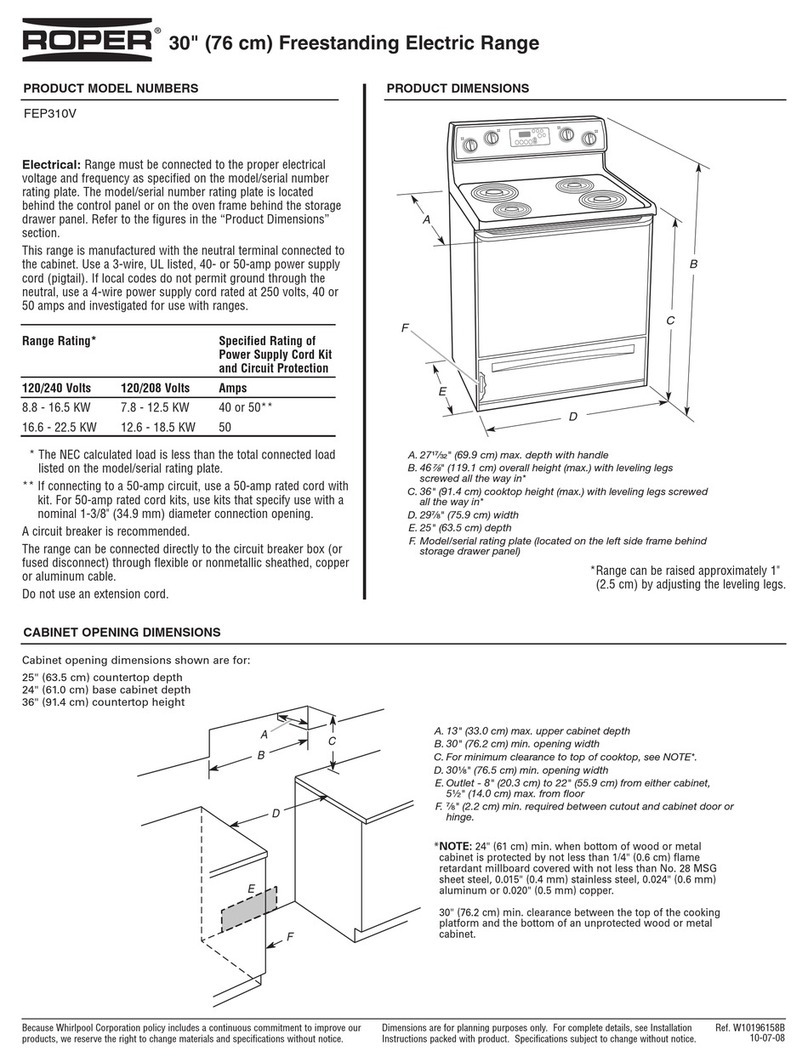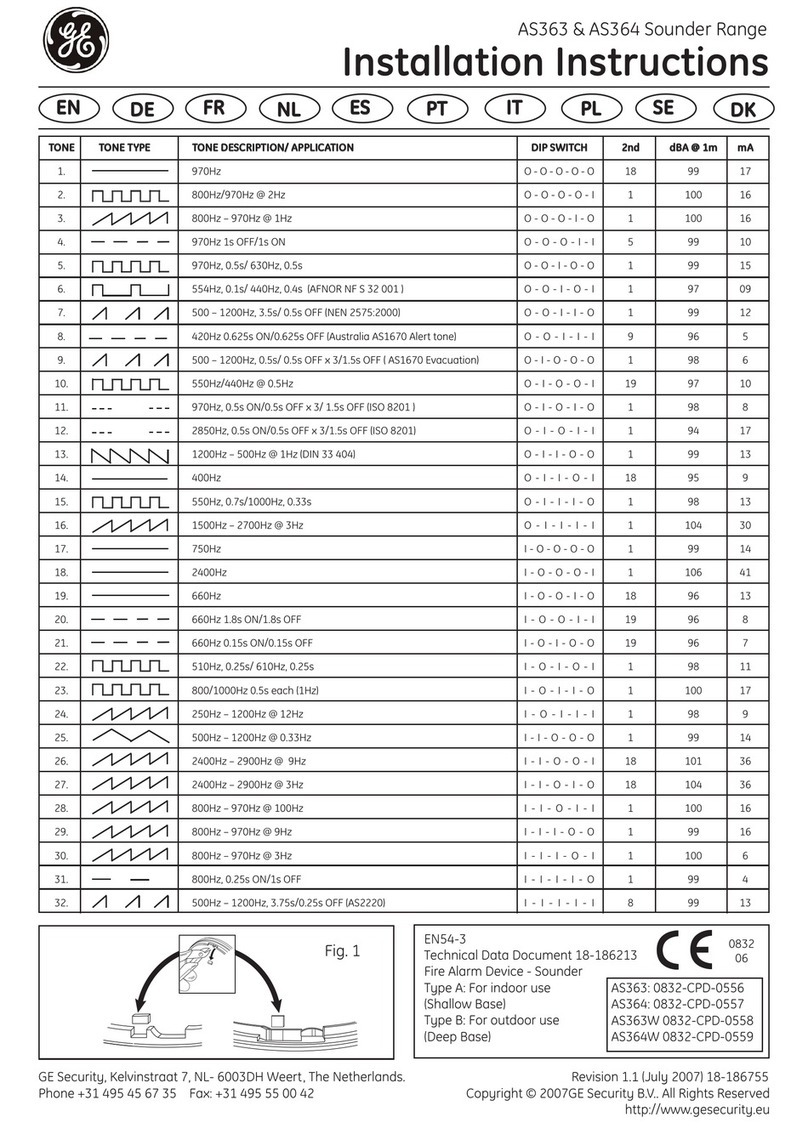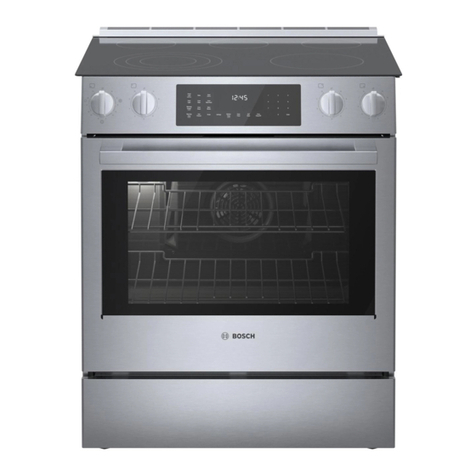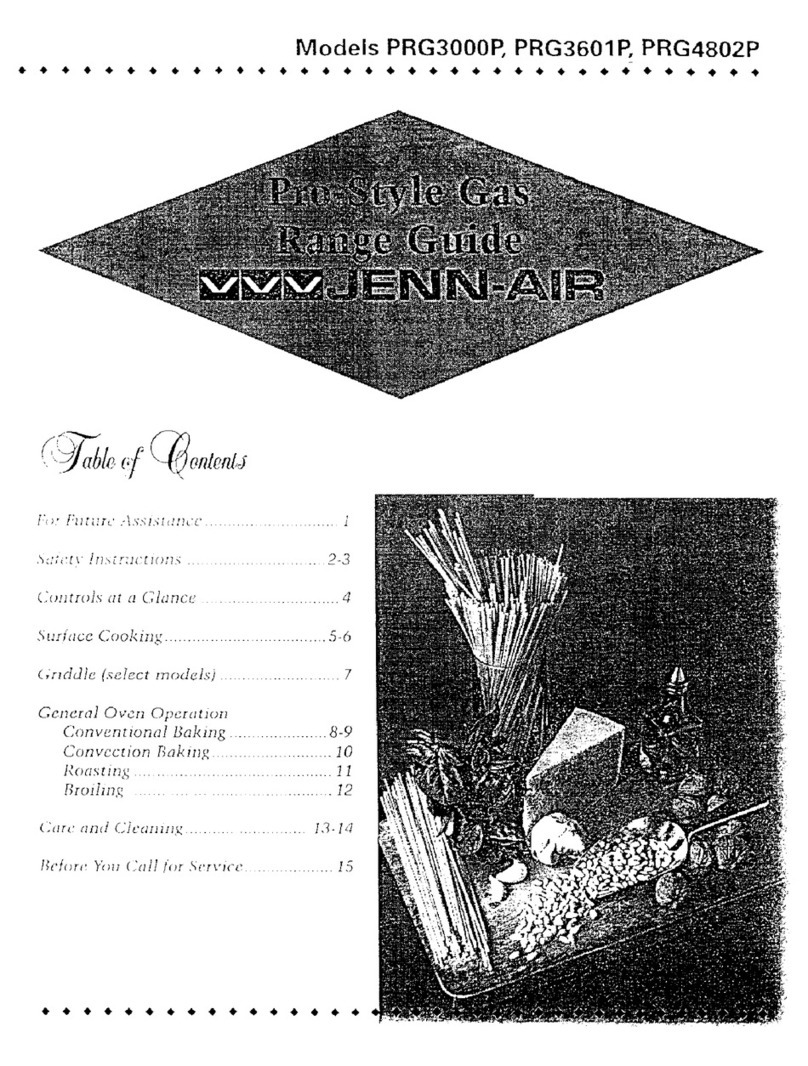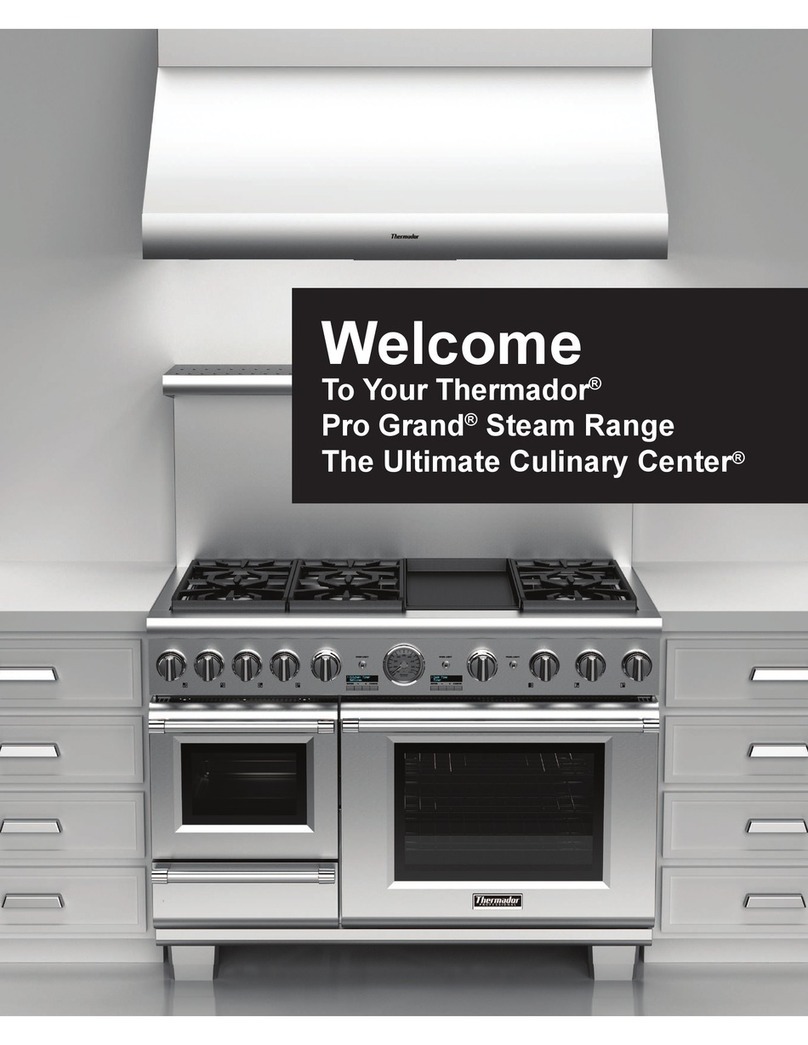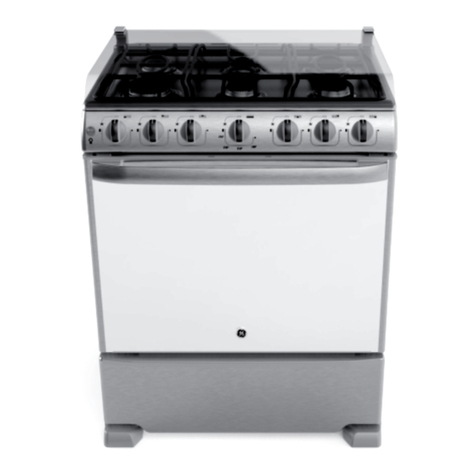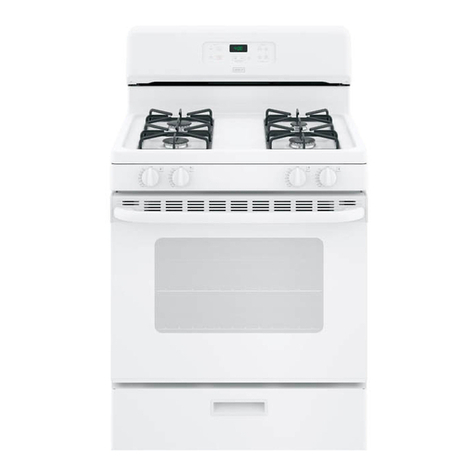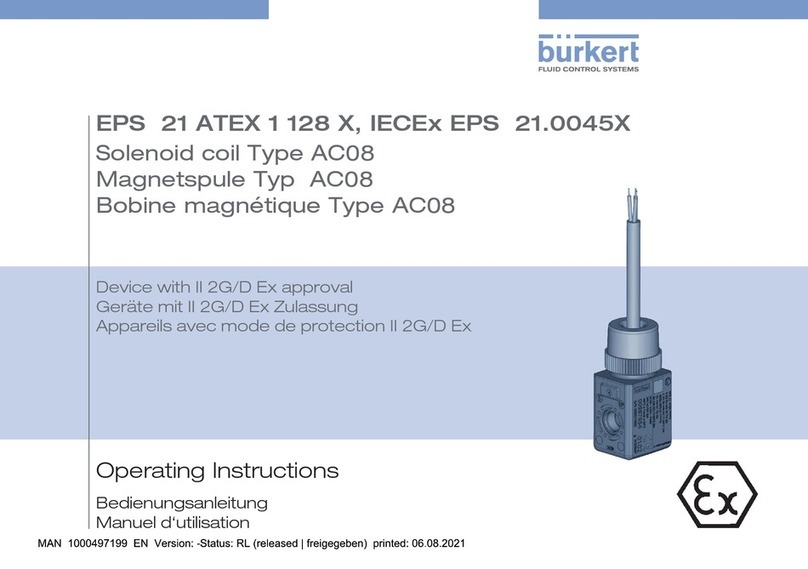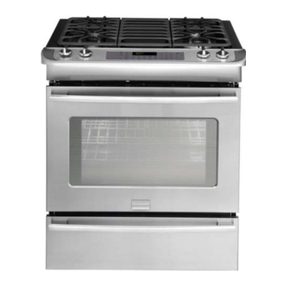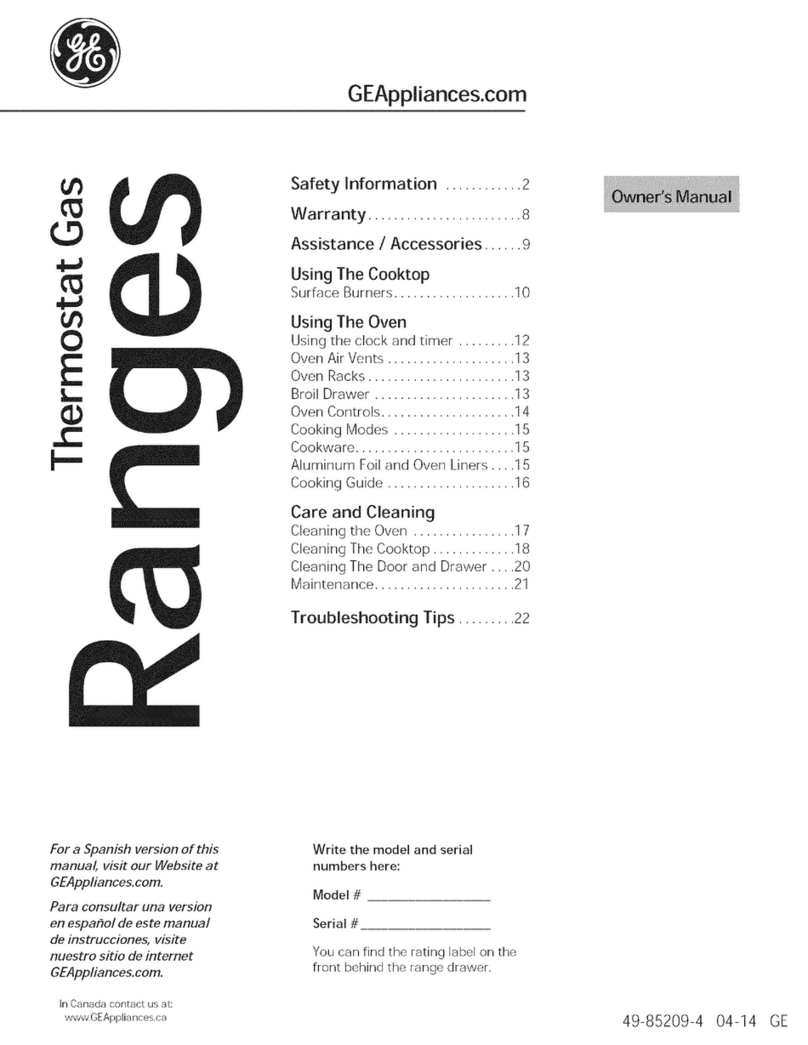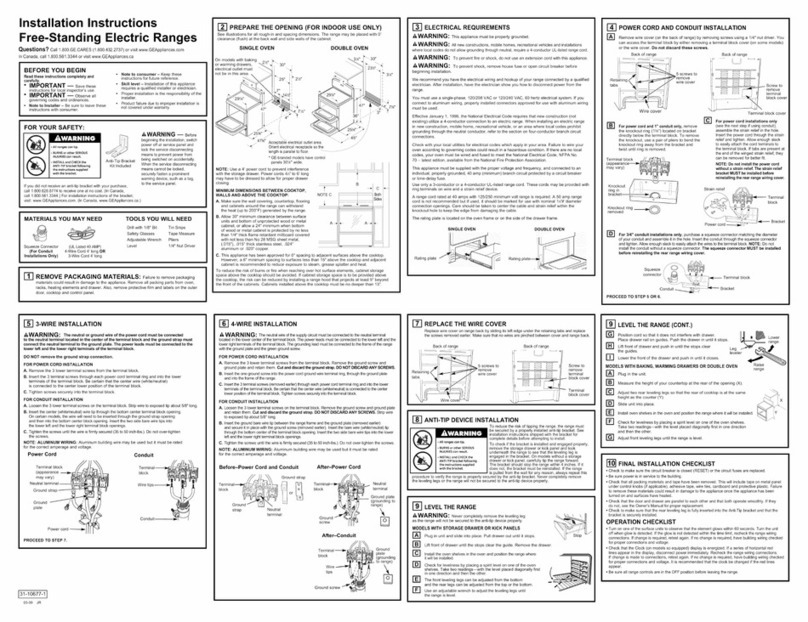Roper FES340Y User manual

ROPER”
Home Appliances
UseAndCare
A
Note To You 2
Important Safety
Instructions 3
Parts And Features 6
Using Your Range 7
Using The
Self-Cleaning Cycle 25
Caring For
Your Range 29
If You Need
Assistance
Or Service 34
Warranty 36
I-800~44-ROPER
Call us with questions or comments.
SELF-CLEANING ELECTRIC RANGE
7p3
MODEL FES340Y

A Note To You
Thank you for buying a Roper appliance.
You have purchased a quality, world-class home appliance. Years of engineering experience
have gone into its manufacturing. To ensure that you will enjoy many years of trouble-free
operation, we have developed this Use and Care Guide. It is full of valuable information on
how to operate and maintain your appliance properly and safely. Please read it carefully.
Also, please complete and mail the Ownership Registration Card provided with your appli-
ance. This will help us notify you about any new information on your appliance.
Your safety is important to us.
This guide contains safety symbols and statements. Please pay special attention to these
symbols and follow any instructions given. Here is a brief explanation of the use of each
symbol.
This symbol will help alert you to such
dangers as personal injury, burns, fire and
electrical shock.
This symbol will help you avoid actions
which could cause product damage
(scratches, dents, etc.) and damage to your
personal property.
Our toll-free number, I-SOO-44-ROPER (l-800-447-6737), is
available 24 hours a day.
If you ever have a question concerning your appliance’s operation, or if you need service, first
see “If You Need Assistance Or Service” on page 34. If you need further help, feel free to call
us. When calling, you will need to know your appliance’s complete model number and serial
number. You can find this information on the model and serial number plate (see diagram on
page 6). For your convenience, we have included a handy place below for you to record these
numbers, the purchase date from the sales slip and your dealer’s name and telephone
number. Keep this book and the sales slip together in a safe place for future reference.
Model Number
Serial Number
Purchase Date
Dealer Name
Dealer Phone

Important Safety Instructions
To reduce the risk of fire, electrical shock, injury to
persons, or damage when using the range, follow
basic precautions, including the following:
General
l
Use the range only for its
l
Read all instructions before intended use as described in
using the range. this manual.
l
Install or locate the range only
in accordance with the pro-
vided Installation Instructions.
The range must be installed by
a qualified installer. The range
must be properly connected to
electrical supply and grounded.
l
Do not t units,
areas near units, heating ele-
ments or interior surfaces of
oven. Surface units and heat-
ing elements may be hot even
though they are dark in color.
Areas near surface units and
l
WARNING: To reduce the risk interior surfaces of an oven
of ti ping of the appliance, the
P become hot enou h to cause
app iance must be secured by burns. During ancpafter use,
a proper1
bracket. o check if the bracket
7 installed anti-tip do not touch, or let clothing
or other flammable materials
is installed properly, see “The contact surface units, areas
anti-tip bracket” on page 24. near units, heating elements or
l
CAUTION: Do not store things interior surfaces of oven until
children might want above the they have had sufficient time
range. Children could be to cool. Other surfaces of the
burned or injured while climb- range may become hot enough
ing on it. to cause burns; such as, the
l
Do not leave children alone or oven vent opening, the surface
unattended in area where the near the vent opening, the
range is in use. They should cooktop and the oven door.
never be allowed to sit or stand
on any part of the range. They
could be burned or injured.
l
Do not operate the range if it
is damaged or not working
properly.
l
Do not use the range for
l
Do not wear loose or hanging
warming or heatin the room. garments when using the
Persons could be urned or
% range. They could ignite if they
injured, or a fire could start. touch a hot surface unit and
you could be burned.
continued on next paqe
. -
3

l
Use only dry potholders. Moist
l
Check to be sure lass cook-
or damp potholders on hot
surfaces may result in burns ing utensils are sa e for use on
7
from steam. Do not let the range. Only certain types
potholder touch hot heating of glass, glass-ceramic, ce-
ramic, earthenware or other
elements. Do not use a towel or
bulky cloth for a potholder. It glazed utensils are suitable for
could catch on fire. cooktops without breaking due
to the sudden change in tem-
l
Keep range vents unobstructed. perature.
l
Do not heat unopened contain- . Never leave surface units
ers. They could explode. The unattended at high heat set-
hot contents could cause burns tings. A boilover could result
and container particles could and cause smoking and greasy
cause injury. spillovers that may ignite.
l
Do not store flammable materi-
als on or near the range. The
fumes can create an explosion
and/or fire hazard.
When using the cooktop
l
Make sure the reflector bowls
l
Turn pan handles inward, but
are in place during cooking. not over other surface units.
Cookin !I without reflector bowls This will help reduce the
may su ject the wiring and chance of burns, i
7niting of
components underneath them flammable materia s, and spills
to damage. due to bumping of the pan.
l
Do not line reflector bowls with
aluminum foil or other liners.
When using the oven
Improper installation of these
liners may result in a risk of
l
Always position oven rack(s) in
desired location while oven IS
electrical shock or fire. cool. If a rack must be re-
l
Select a pan with a flat bottom moved while oven is hot, do
that is about the same size as not let potholder contact hot
the surface unit. If pan is heating element in oven.
smaller than the surface unit,
l
Use care when opening oven
some of the heating element door. Let hot air or steam
will be ex1osed and ma escape before removing or
result in t e igniting of c othing
Y replacing food.
or potholders. Correct pan
size also improves cooking
efficiency.
4

Grease
l
Grease is flammable. Do not
allow grease to collect around
cooktop or in vents. Wipe spill-
wiping out excess food spills
pnor to self-cleaning.
overs immediately.
l
Do not use water on grease
fires. Never pick up a flaming
pan. Smother flaming pan on
range by coverin with a well-
fitted lid, cookie s eet or flat
iJl
tray. Flaming grease outside o
E
an can be extin uished with
aking soda or, i
P
available, a
multipurpose dry chemical or
foam-type extinguisher.
Care and cleaning
l
Do not use oven cleaners. No
commercial oven cleaner or
oven liner protective coating of
any kind should be used in or
around any part of the oven.
l
Before self-cleaning the oven.,
remove broiler pan, broiler gnd,
If oven racks and other utensrls.
Do not use your oven to clean
miscellaneous parts unless you
are instructed to do so in this
Use and Care Guide.
l
Do not clean door heat seal. It
is essential for a good seal.
l
Do not soak removable heating Care should be taken not to
elements in water. The element rub, damage or move the seal.
will be damaged and shock or Clean only parts recommended
fire could result. in this Use and Care Guide.
l
Small amounts of formaldehyde
l
Do not repair or replace any
and carbon monoxide are Y
iven part of the range unless spe-
off in the Self-Cleaning cyc e cifically recommended in this
from fiberglass insulatron and manual. All other servicing
food decomposition. Significant should be referred to a quali-
exposure to these substances fied technician.
can cause cancer or reproduc-
l
Disconnect the electrical sup-
tive harm. Exposure can be ply before servicing the range.
minimized by venting with a
hood or open window and
- SAVE THESE INSTRUCTIONS -

ContrOl Panel ,
Q”‘facelJnit
marker
Automatic over
-btt Switch
~%il element
-Bake e\ement
6

Using Your Range
In This Section
Page
Using the surface units ..................... .7
Positioning racks and .9pans ..............
For best air circulation .................... .10
Using aluminum foil for baking.. .....lO
The electronic oven control.. .......... .ll
Page
Adjusting the oven temperature
control ............................................... 15
16
Broiling .............................................. 17
Broiling tips ....................................... 18
Energy saving tips ............................
.12
Setting the clock.. ............................
Using the electronic Minute Timer.. 13
Using the Set/Cancel button.. .13
.........
Baking/roasting ................................ 14
Using the electronic oven control.. ...18
22
The oven vent ................................... 23
The storage drawer ..........................
The anti-tip bracket .......................... 24
Optional door panel pat ................ ..2 4
To obtain the best cooking results possible, you must operate your range properly. This
section gives you important information for efficient and safe use of your range.
Using the surface units
Push in control knobs before turning
them to a setting. You can set them any-
where between HI and OFF.
Surface unit markers
The solid dot in the surface unit marker
shows which surface unit is turned on by
that knob.
Surface unit indicator lights
One of the Surface Unit Indicator Lights on
the control panel will glow when a surface
unit is on.
Burn and Fire Hazard
Be sure all control knobs are turned to
OFF and all indicator lights are OFF
when you are not cooking.
Someone could be burned or a fire
could start if a surface unit is acciden-
tally left ON.
7

Until you get used to the settings, use
the following as a guide. For best results,
start cooking at the high setting; then turn
the control knob down to continue cooking.
SElTING
HI
MED-HI
MED
MED-LO
LO
RECOMMENDED USE
l To start foods cooking.
l To bring liquids to a boil.
l To hold a rapid boil.
l To fry chicken or pan-
cakes.
l For gravy, pudding and
icing.
l To cook large amounts of
veaetables.
l To keep food cooking
after starting it on a
higher setting.
l To keep food warm until
ready to serve.
Cookware tips
l Select a pan that is about the same size
as the surface unit.
l NOTE: For best results and greater
energy efficiency, use only flat-bottomed
cookware that makes good contact with
the surface units. Cookware with rounded,
warped, ribbed (such as some porcelain
enamelware) or dented bottoms could
cause severe overheating, which damages
the cookware and/or surface unit.
You can, however, use the newer
cookware available with slightly indented
bottoms or very small expansion channels.
This cookware is specially designed to
provide the good contact needed for best
cooking results.
Also, woks, canners and teakettles with
flat bottoms suitable for use on your
cooktop are now available in most stores
that sell housewares.
l The pan should have straight sides and a
tight-fitting lid.
l Choose medium to heavy gauge (thick-
ness) pans that are fairly lightweight.
Product Damage Hazard
l If a surface unit stays red for a long
time, the bottom of the pan is not flat
enough or is too small for the surface
unit. Prolonged usage of incorrect
utensils could result in damage to the
surface unit, cooktop, wiring and
surrounding areas. To prevent dam-
age, use correct utensils, start cooking
on HI and turn control down to con-
tinue cooking.
l Do not leave an empty utensil, or one
which has boiled dry, on a hot surface
unit. The utensil could overheat and
could damage the utensil or surface
unit.
l The pan material (metal or glass) affects
how fast heat transfers from the surface
unit through the pan material and how
evenly heat spreads over the pan bottom.
Choose pans that provide the best cooking
results.
l Handles should be made of sturdy, heat-
resistant material and be securely attached
to the pan.

Home canning information
To protect your range:
l Use flat-bottomed canners/pans for best
results.
l Use the largest surface unit for best
results. Also, use a canner/pan which can
be centered over the surface unit and
which does not extend more than one inch
outside surface unit area. Large diameter
canners/pans, if not properly centered, trap
heat and can cause damage to the
cooktop.
l Do not place canner on two surface units
at the same time. Too much heat will build
up and will damage the cooktop.
l Start with hot water. This reduces the
time the control is set on high. Reduce
heat setting to lowest position needed to
keep water boiling.
l Keep reflector bowls clean for best heat
reflection.
l To prolong the life of the elements:
- Prepare small batches at a time.
- Do not use elements for canning all
day.
Optional canning kit
The large diameter of most water-bath or
pressure canners combined with high heat
settings for long periods of time can shorten
the life of regular surface units and cause
damage to the cooktop.
If you plan to use the cooktop for canning,
we recommend the installation of a Canning
Kit. Order the kit (Part No. 242905) from
your Roper dealer or authorized Roper
service company.
Positioning racks and pans
For baking/roasting with one rack, place
the rack so the top of the food will be
centered in the oven.
Rack placement for specific foods:
FOOD 1RACK POSITION
Frozen pies, large
roasts, turkeys Lowest level or
2nd level from
bottom
Angel and bundt
cakes, most quick
breads, yeast
breads, casseroles,
meats
Cookies. biscuits,
2nd level from
bottom
2nd or 3rd level
muffins, cakes, non- from bottom
frozen pies Failure to follow the above precautions
could result in personal injury.
When baking on two racks, arrange racks
on bottom and third level from bottom.
NOTE: For recommended rack placement
when broiling, see “Broiling rack position
chart” on page 17.
Personal Injury Hazard
*Always position oven rack(s) in
desired location before turning oven
on. Be sure the rack(s) is level.
l If rack(s) must be moved while oven
is hot, use potholders or oven mitts to
protect hands.

For best air circulation
Hot air must circulate around the pans in the
oven for even heat to reach all parts of the
oven. This results in better baking.
l Place the pans so that one is not directly
over the other.
l For best results, allow 1% to 2 inches
(4-5 cm) of space around each pan and
between pans and oven walls. There must
be a minimum space of 1 inch (2.5 cm).
l Use only one cookie sheet in the oven at
one time.
Use the following as a guide to determine
where to place the pans:
One pan
Place in the center of the oven rack.
Two pans
Place in opposite corners of the oven rack.
Three or four pans
Place in opposite corners on each oven
rack. Stagger pans so no pan is directly over
another.
Using aluminum foil for baking
Use aluminum foil to catch spillovers from
pies or casseroles.
l Place the foil on the oven rack below the
rack with the food. Turn up foil edges and
make sure foil is about 1 inch (3 cm)
larger all around than the dish holding the
food.
l Do not cover the entire rack with alumi-
num foil. It will reduce air circulation and
cause poor cooking results.
l Do not line oven bottom or entire oven
rack with foil or other liners. Poor baking
will result.
Electrical Shock and Fire Hazard
Do not allow foil to touch the heating
elements.
Failure to follow this precaution could
result in electrical shock or fire hazard
and damage to the elements.
10

The electronic oven control
Set/cancel
button I Display Timehemp
I set button
Timer
button Clock
button Cook time
button Clean Broil Bake temp
button button button
Display/clock
l
When you first plug in the range, the last
time of day set will appear in the display. If,
after you set the clock (page 12), the last time
of day set again appears in the display, your
electricity was off for a while. Reset the clock.
l
When you are not using the oven, the
control is an accurate clock.
l
When you are using the oven or Minute
Timer, the display will show the time, tempera-
ture settings and what command buttons have
been pressed.
l
When showing the time of day, the display
will show the hour and minutes.
l
When you are using the Minute Timer, the
display will show minutes and seconds in the
following sequence:
- For settings from O-l minute 55 sec-
onds, the display will increase in 5-second
increments and count down each second.
- For settings from 2-10 minutes, the
display will increase in 1O-second incre-
ments and count down each second.
- For settings from lo-60 minutes, the
display will increase in 1-minute incre-
ments and count down each second.
- For settings from 1-2 hours, the display
will increase in Sminute increments and
count down each minute.
- For settings from 2 hours-9 hours
50 minutes, the display will increase in
1O-minute increments and count down
each minute.
l
When you are using Cook Time and/or
Stop Time, the display will show hours and
minutes.
continued on next page
11

Command buttons
The command buttons tell the oven what to
do and in what order. A few examples:
-Clock tells the oven you are going to set
the clock.
-Set/Cancel tells the oven to turn off.
Each command button (except Set/Cancel)
has its own Indicator Light. The Indicator
Light comes on when you touch the com-
mand button.
Timeflemp Set Knob
Once you’ve pushed a command button to
tell the oven what you want it to do, you’ll
use the Time/Temp Set Knob to set a
temperature or time. Turning the Timenemp
Set Knob clockwise increases the number
on the display. Turning the Time/Temp Set
Knob counterclockwise decreases the
number on the display.
Setting the clock
1. Push the Clock button. TIME will light up
in the display.
2. Turn the Time/Temp Set Knob until the
correct time shows in the display.
3. Push the Set/Cancel button to start clock
operation.
12

Using the electronic Minute Timer
The Minute Timer does not start or stop the
oven. It works like a kitchen timer. It can be
set in minutes and seconds up to 9 hours
and 50 minutes. You will hear 3 tones when
the set time is up.
1. Push the Timer button. TIMER will come
on and the display will show “:OO”.
2. Turn the Time/Temp Set Knob until the
desired time shows in the display. The
Minute Timer will begin counting down 2
seconds after the time is set. When time
is up, you will hear 3 tones, then one tone
every 10 seconds until you push the
Timer button
To cancel the Minute Timer:
l Push and hold the Timer button until the
time of day shows in the display.
OR
l Push the Timer button and turn the Time/
Temp Set Knob until the time of day shows
in the display.
Using the Set/Cancel button
The Set/Cancel button will cancel any
function except for the Timer function. When
the Set/Cancel button is pushed, the large
display will show the time of day.
13

Baking/roasting
1. Position the rack(s) properly before
turning on the oven. To change rack
position, lift rack at front and pull out.
For further information, see “Positioning
racks and pans” on page 9.
3. Turn the Time/Temp Set Knob until the
desired temperature shows in the small
display. Once the temperature is set, ON
will come on.
NOTE: If a bake/roast temperature is not
set within 30 seconds of pushing the
Bake Temp button, BAKE and “---OF” will
disappear from the display.
4. When baking, preheat the oven. (Pre-
heating is not needed when roasting.)
The oven is preheated when you hear
one tone and the set temperature shows
in the small display.
NOTE: The small display will show the
actual oven temperature in 5” increments,
starting at loo”, while the oven is pre-
heating.
5. Put food in the oven. During baking/
roasting, the elements will turn on and off
to keep the oven temperature at the
setting.
NOTE: The top element helps heat
during baking/roasting, but does not
turn red.
6. When baking/resting is done, push the
Set/Cancel button. The time of day will
show in the display.
14

Adjusting the oven temperature control
Oven temperature controls will gradually
shift after years of use. So, even though
your new oven is properly adjusted to
provide accurate temperatures, it may cook
faster or slower than your old oven.
If, after using the oven for a period of time,
you are not satisfied with the temperature
settings, you can change them by following
these steps:
1. Push the Bake Temp button. Turn the
Time/Temp Set Knob clockwise to a
temperature setting above 500°F.
2. Immediately push and hold the Bake
Temp button again until the display
shows “00”.
3. Turn the Time/Temp Set Knob until the
desired temperature change (between
-35°F and +35”F) shows in the display.
4. Push the Set/Cancel button to enter the
new temperature.
15

Broiling
1.
2.
3.
4.
6.
Position the rack before turning the oven
on. See “Broiling rack position chart” on
page 17.
Put the broiler pan and food on the rack.
Close the door to the Broil Stop position
(open about 4 inches [lo.2 cm]). The
door will stay open by itself.
NOTE: Leave the door partly open
whenever using the oven to broil. This
allows the oven to maintain proper
temperatures.
Push the Broil button. The small display
will show “---I’ and BROIL will come on.
4-Broil element on 80% of the time
3-Broil element on 70% of the time
2-Broil element on 60% of the time
l-Broil element on 50% of the time
Most broiling is done at the HI setting. If food
is cooking too fast, broil times can be varied
by using broil settings 1 through 5.
NOTE: Fish and chicken are some foods
that may cook better if you use lower
broiling temperatures.
When broiling is done, push the Set/
Cancel button. Time of day will show in
the display.
16

Broiling rack position chart
I
TYPE OF FOOD/
DONENESS I
Hamburger patties and
thin steaks, 55” thick or
less
Quickly searing food,
rare and medium
steaks, medium patties
ham slices, fish steaks,
frankfurters
Well-done steaks and
patties, lamb chops,
split chicken, pork
steaks and chops,
whole fish
Broiling tips
l Use the broiler pan and grid for broiling.
They are designed to drain excess liquid
and grease away from the cooking surface
to help prevent spatter, smoke or fire.
l Refer to a broiling chart in a reliable
cookbook for correct broiling times.
l After broiling, remove the broiler pan
from the oven when you remove the food.
Drippings will bake on the pan if you leave
it in the heated oven.
Fire Hazard
l Place meat the correct distance from
the element. Meat placed too close to
the element could spatter, smoke, burn
or catch fire during broiling.
*To ensure adequate grease drainage,
do not use cookie sheets or similar
pans for broiling. Also, covering the
broiler grid with foil is not recom-
mended. Poor drainage of grease could
result in fire. If foil is used, cut slits in
foil to line up with all openings in broiler
grid. Grease can then drain away and
cool in pan.
17

Energy saving tips
Although the energy used for cooking is
usually a very small percentage of the total
energy used in the home, cooking energy
can be used efficiently. Here are some tips
to help you save energy when using your
cooking product:
l Use pans with flat bottoms, straight sides
and tight-fitting lids.
l Match the pan to the surface unit size.
l Cook with a minimum of liquid or fat to
help shorten cooking time.
l Preheat pans only when recommended
and for the shortest time possible.
l Stat-l food on higher heat settings, then set
surface unit control on low or off to finish
cooking. Use retained heat for cooking
when possible.
l Use the more efficient surface units
instead of the oven when possible.
l Turn on the surface unit only after placing
filled pan on the unit.
l “Oven peeking” may cause heat loss,
longer cooking times and unsatisfactory
baking results. Rely on your timer to keep
track of the cooking time.
l Bake cakes, pies or cookies when oven is
warm. Best time is after a meal has been
cooked in it.
l Preheat the oven no longer than
necessary.
l Plan your meals for the most efficient use
of the range. When using the oven to cook
one food, try to cook the rest of the meal in
it also.
l Do not preheat when broiling, roasting or
cooking items such as casseroles.
l Keep reflector bowls clean for best heat
reflection.
Using the electronic oven control
The electronic oven control will turn the
oven on and off at times you set even
when you are not around.
Delayed time baking/roasting is ideal for
foods which do not require a preheated
oven, such as meats and casseroles. Do
not use delayed time cooking for cakes,
cookies, etc. ... undercooking will result.
Before using the electronic oven
control, make sure the clock is set to the
correct time of day. (See “Setting the
clock” on page 12.)
To start baking/roasting now
and stop automatically
1. Position the oven rack(s) properly and
put food in the oven.
18

2. Push the Cook Time button. OVEN, TIME
and HR will come on. ON will not come
on until the time of day that oven is to be
turned on is reached. If you start baking/
roasting immediately, ON will come on.
3. Turn the Time/Temp Set Knob clockwise
until the desired baking/roasting time
shows in the large display.
When you are using the Cook Time
and/or Stop Time button, the display
shows hours and minutes in the following
sequence:
l For settings from O-2 hours, the
display will increase in first a lo-minute
increment, then 5-minute increments.
l For settings from 2 hours-l 1 hours
55 minutes, the display will increase in
5-minute increments.
The small display and BAKE will flash and
a tone will keep sounding until Step 4 is
done.
4. Push the Bake Temp button and set the
desired baking/roasting temperature. The
small display will show the set tempera-
ture while the large display shows the
remaining baking/roasting time. OVEN,
TIME, HR, BAKE and ON will come on.
5. The large display will count down in
minutes. The small display will show the
actual oven temperature until the set
temperature is reached. A tone will sound
at that time.
6. When the baking/roasting time is
completed, three tones will sound. The
large display will show “0:OO” and OVEN,
TIME and HR will come on. A tone will
sound every 10 seconds until the Set/
Cancel button is pushed.
19

7. Push the Set/Cancel button to return to
the time of day. If the Set/Cancel button is
not pushed, a tone will sound every 10
seconds.
To delay start and stop
automatically
1.
2.
3.
4.
Position the oven rack(s) properly and
put
food in the oven.
Push the Cook Time button. OVEN,
TIME and HR will come on. ON will not
come on until the time of day that oven is
to be turned on is reached.
Turn the Time/Temp Set Knob clockwise
until the desired baking/roasting time
shows in the large display. The small
display and BAKE will flash and a tone
will keep sounding until Step 4 is done.
Push the Stop Time button. The large
display will show the current stop time
and STOP TIME will come on. Turn the
Time/Temp Set Knob clockwise until the
desired stop time shows in the display.
DELAY and OVEN will come on. The
small display and BAKE will flash and a
tone will keep sounding until Step 5 is
done.
20
Table of contents
Other Roper Range manuals
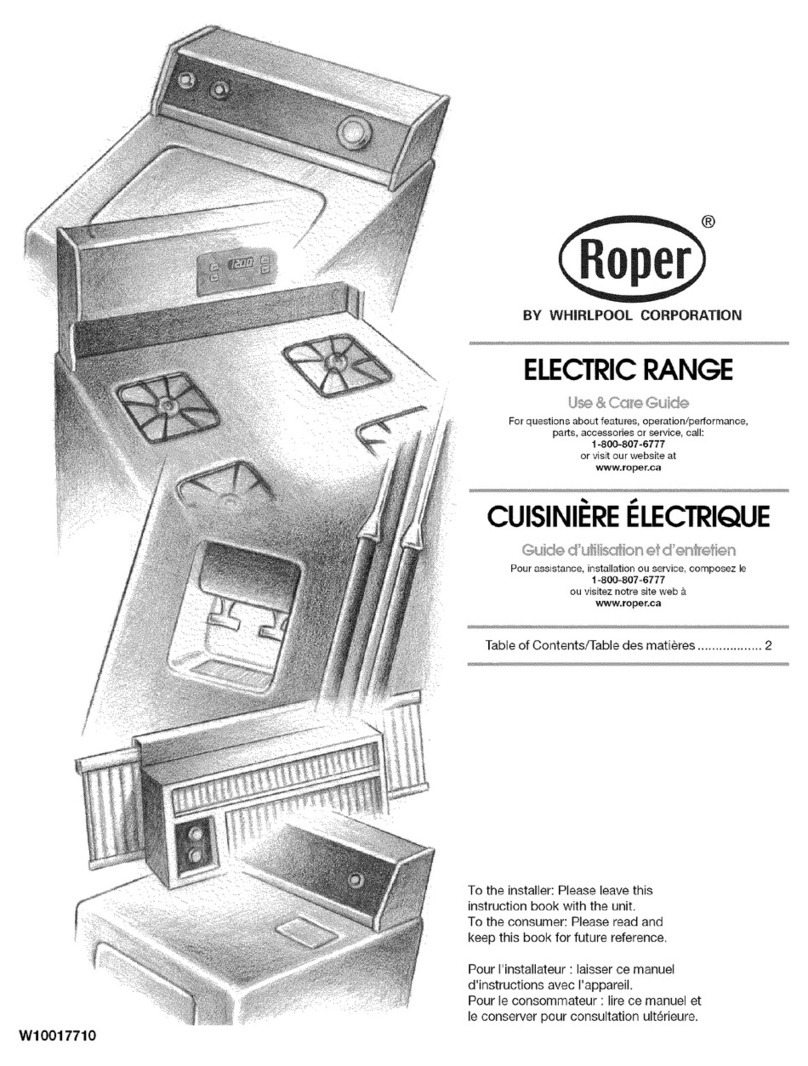
Roper
Roper RME30003 User manual
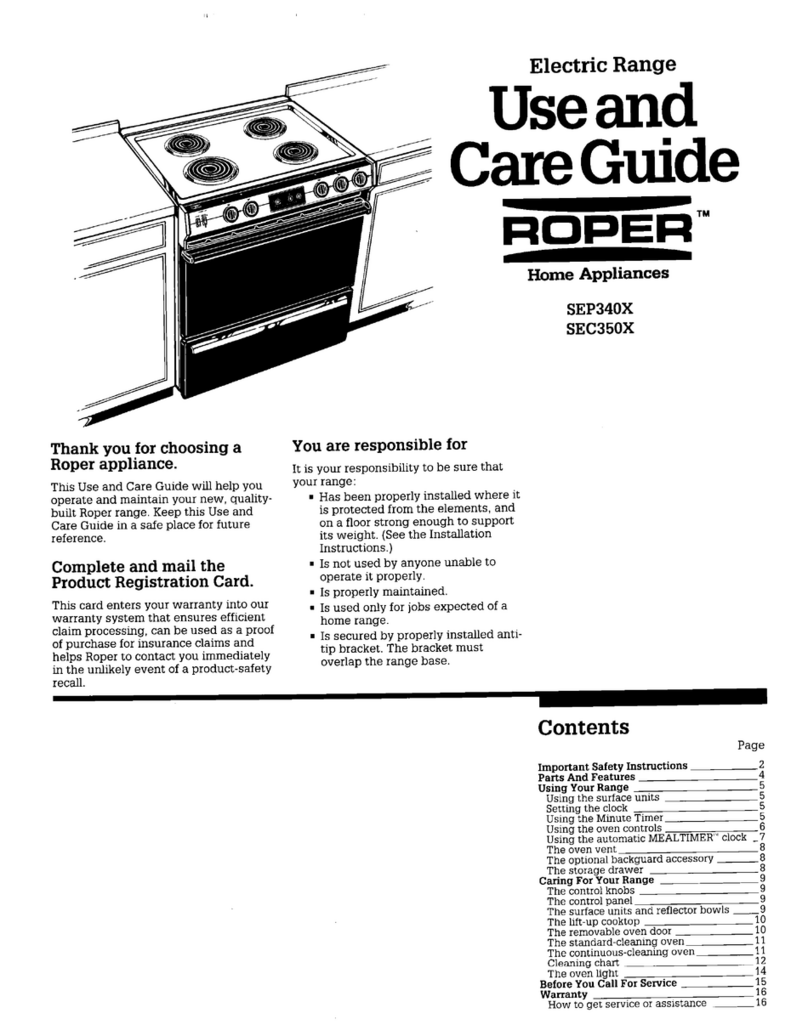
Roper
Roper SEC350X User manual

Roper
Roper FGP335B User manual
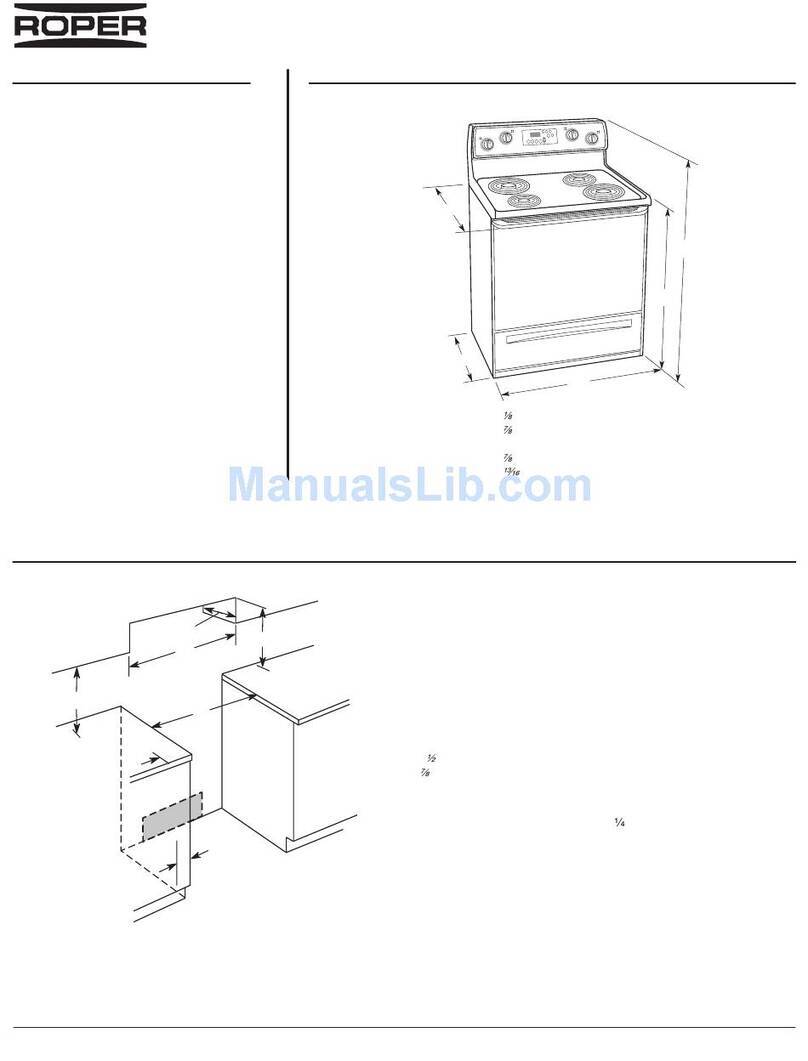
Roper
Roper FEP310KW User instructions

Roper
Roper FEP350Y User manual

Roper
Roper FGP325Y User manual
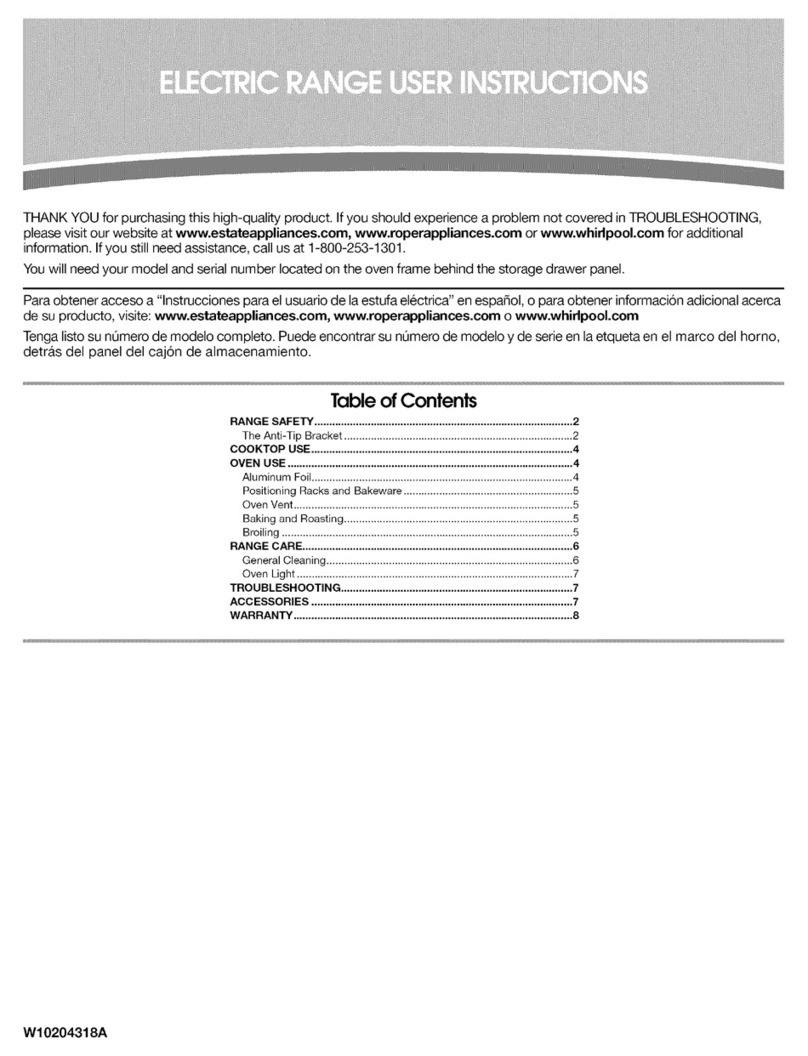
Roper
Roper FEP310VQ0 User manual
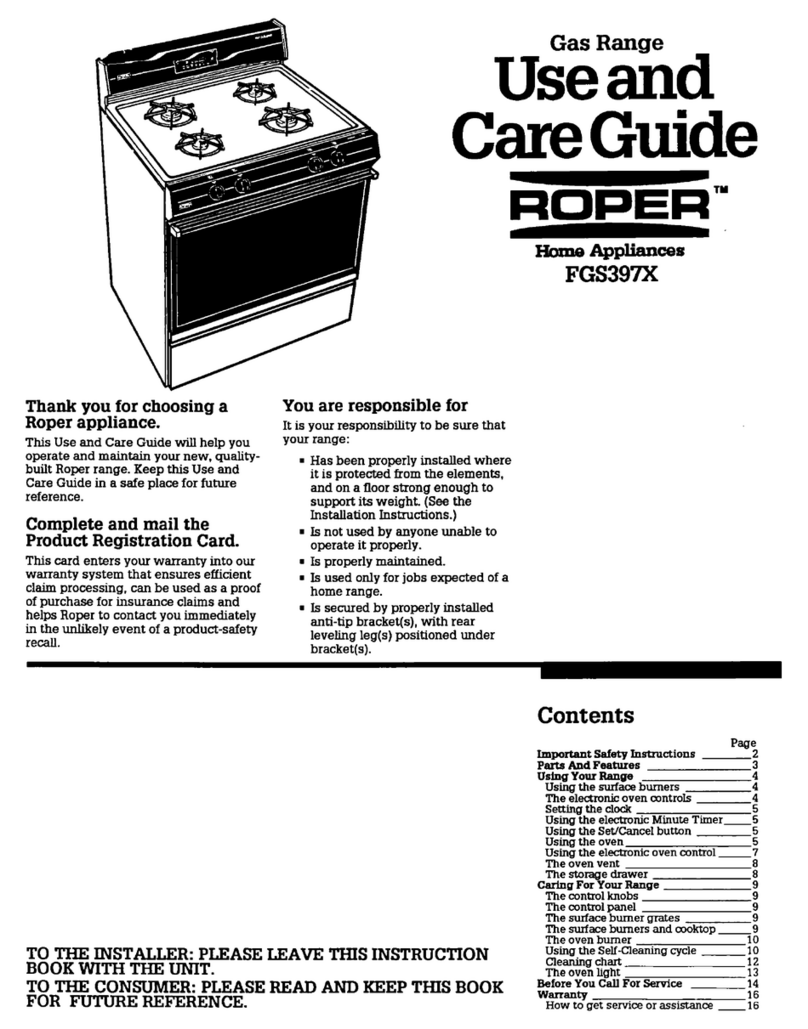
Roper
Roper FGS397X User manual

Roper
Roper FEP310KW4 User manual

Roper
Roper SGS395X User manual

Roper
Roper FGP314TQ0 User manual

Roper
Roper REP34800 User manual

Roper
Roper FGP325G User manual

Roper
Roper FGS385B User manual
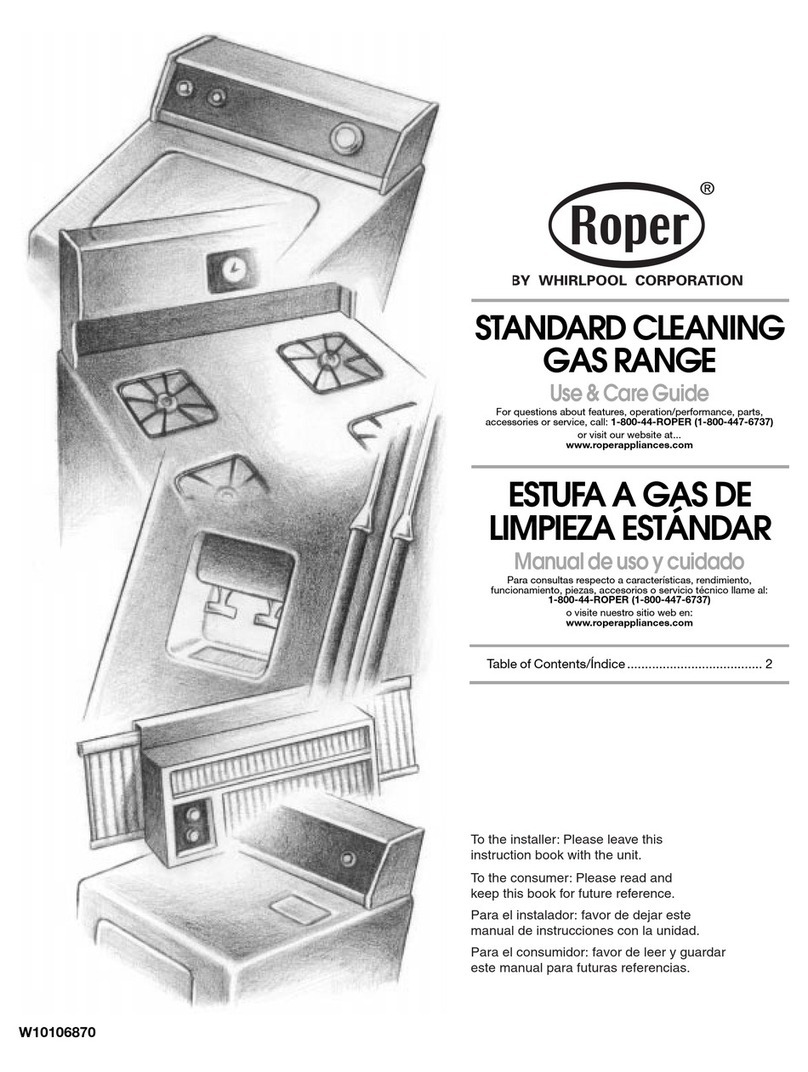
Roper
Roper W10106870 User manual
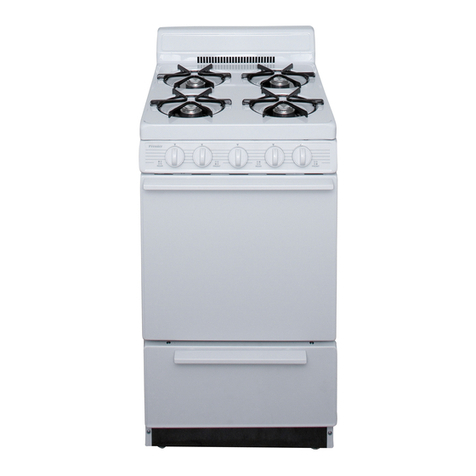
Roper
Roper 20" User manual

Roper
Roper FES385Y User manual

Roper
Roper FGP335Y User manual
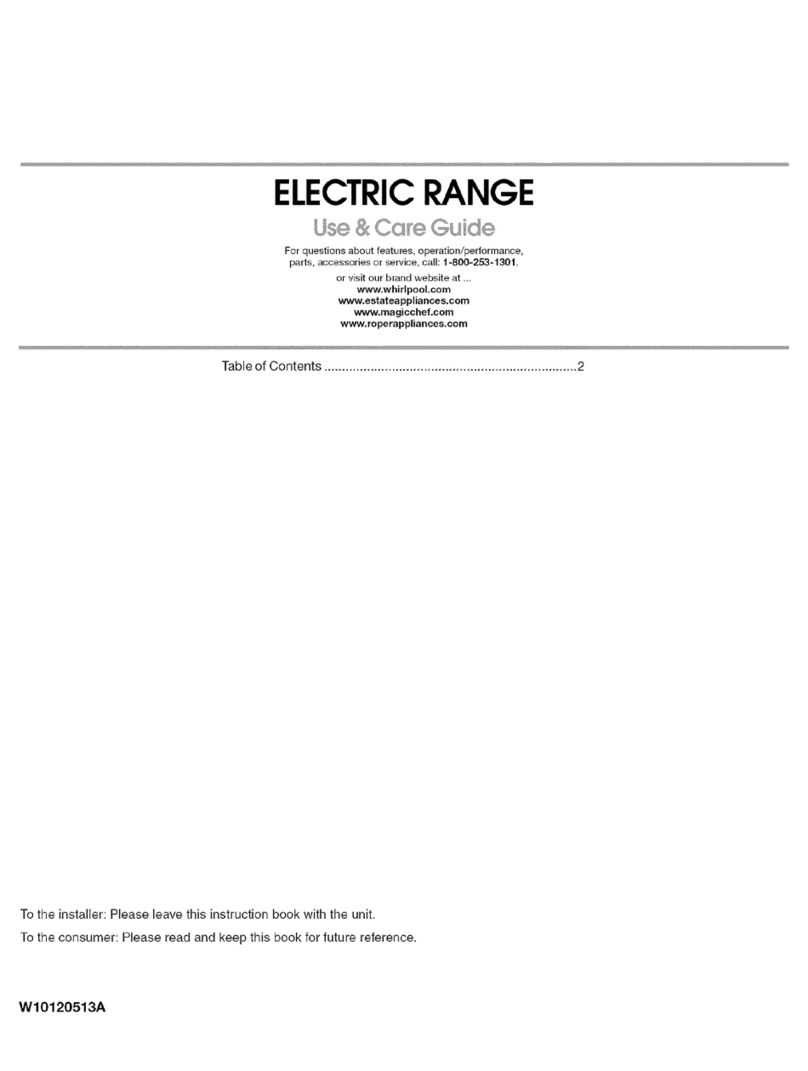
Roper
Roper FEP310KW5 User manual
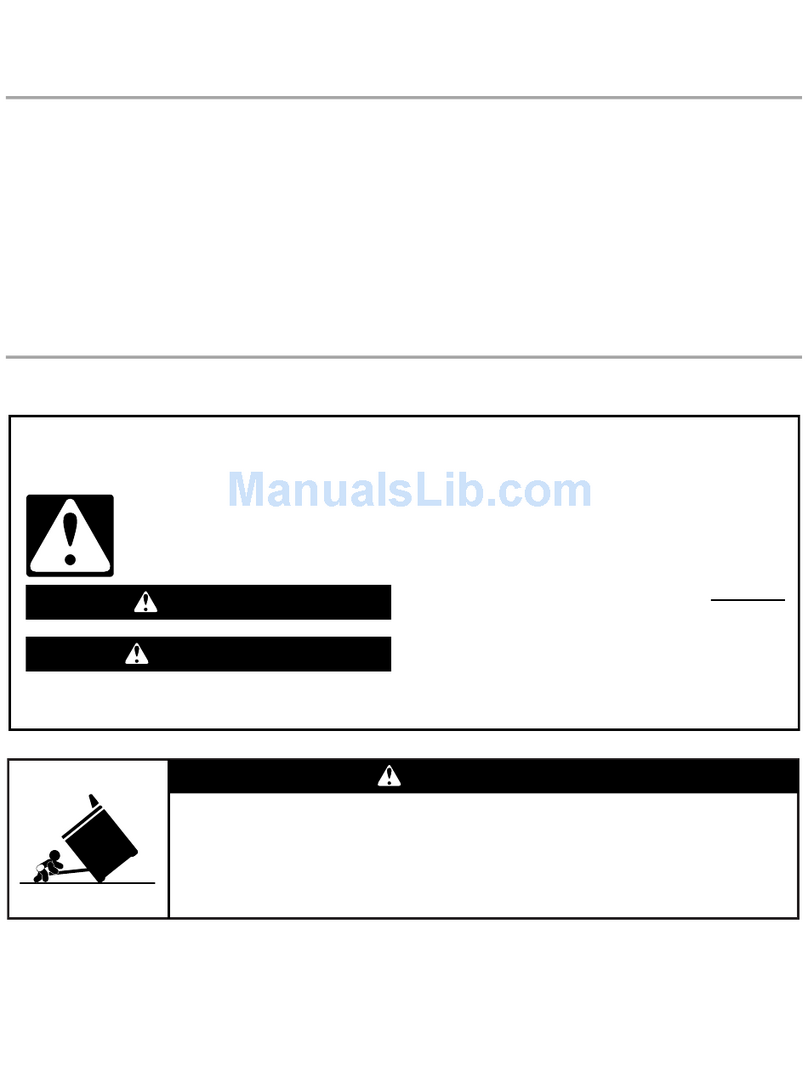
Roper
Roper FEP310KW User manual
